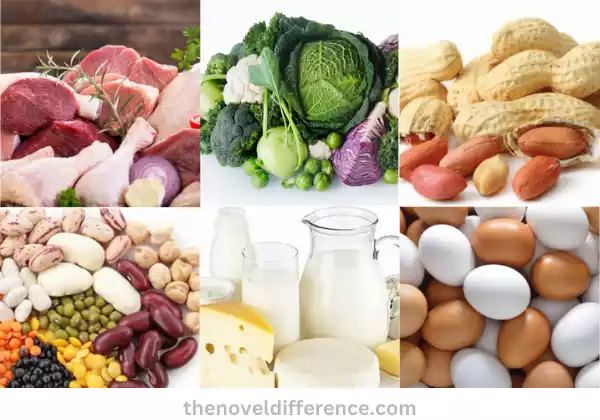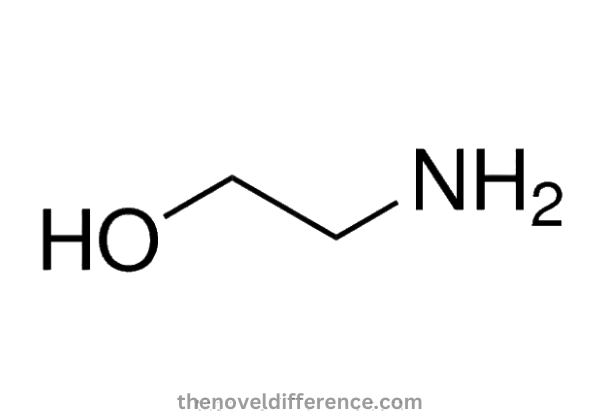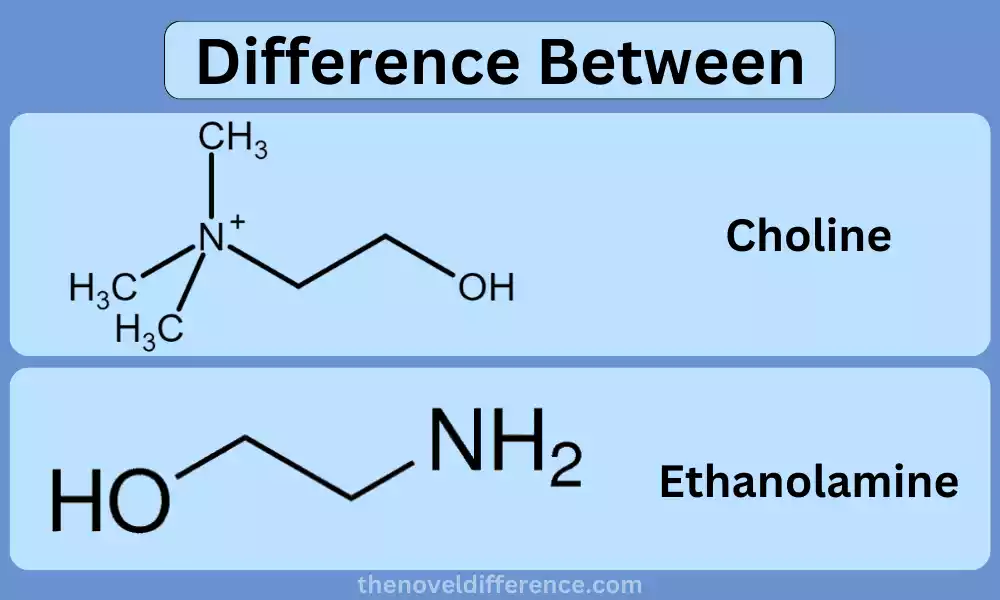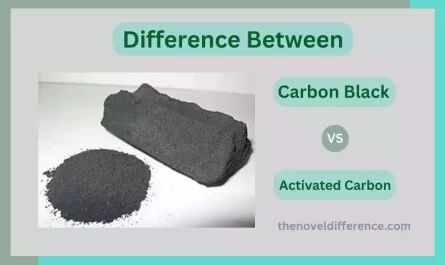A brief overview of Choline and Ethanolamine
Choline and ethanolamine are both important molecules involved in various physiological processes in the human body.
Choline is an essential nutrient that belongs to the B-vitamin complex. Protein can be found in numerous food items, including eggs, meat, fish, and nuts.
Choline plays an integral part in many functions, from memory formation and muscle control to producing the neuroprotective neurotransmitter acetylcholine.
Choline is also involved in the structure and function of cell membranes and is necessary for proper lipid metabolism. It has been linked to brain health, liver function, and fetal development during pregnancy.
Ethanolamine, also known as monoethanolamine (MEA), is a primary amine with the chemical formula C2H7NO. It is a key component of phospholipids, which are essential for the structure and function of cell membranes.
Ethanolamine is synthesized within the body and is also obtained through dietary sources such as eggs, meat, and soybeans. Besides its role in cell membrane structure, ethanolamine is involved in neurotransmitter signaling and has been implicated in regulating the inflammatory response.
While choline and ethanolamine have some overlapping functions, they have distinct chemical structures and molecular roles within the body. Understanding their individual contributions to health and well-being may shed some light.
Importance of choline and ethanolamine in human health
Choline and ethanolamine play significant roles in human health, contributing to various physiological processes and maintaining overall well-being.
Here are the important aspects of their roles:
Importance of Choline:
Cognitive Function and Brain Health: Choline is an essential nutrient for the synthesis of acetylcholine, a neurotransmitter involved in memory, learning, and cognitive function. It supports brain development in infants and may help maintain cognitive function in adults.
Cell Membrane Structure: Choline is an essential building block of cell membranes and forms part of their structure. It helps maintain the integrity and fluidity of cell membranes, allowing proper cellular communication and function.
Lipid Metabolism: Choline is involved in lipid metabolism, particularly in the transport and metabolism of fats. It helps prevent the accumulation of fats in the liver and supports proper liver function.
Pregnancy and Fetal Development: Adequate choline intake during pregnancy is essential for the development of the fetal brain and nervous system. It has been associated with improved cognitive function and reduced risk of neural tube defects in infants.
Importance of Ethanolamine:
Nervous System Function and Neurotransmission: Ethanolamine is involved in the production of phospholipids that make up the myelin sheath, a protective coating around nerve fibers. It supports proper nervous system function and efficient neurotransmission.
Cell Membrane Integrity and Fluidity: Ethanolamine is a vital component of phosphatidylethanolamine, a phospholipid that contributes to the structure and fluidity of cell membranes. It helps maintain cell membrane integrity, allowing cells to function optimally.
Inflammatory Response Regulation: Ethanolamine-derived phospholipids are involved in the production of lipid mediators that regulate inflammation. Ethanolamine-containing molecules can modulate the immune response and help maintain a balanced inflammatory state.
Both choline and ethanolamine are essential for the normal functioning of the body. Insufficient intake of these nutrients can lead to various health issues, including cognitive impairment, liver dysfunction, and compromised cell membrane integrity.
Ensuring an adequate supply of choline and ethanolamine through a balanced diet or supplementation is crucial for supporting optimal health and well-being.
Choline
Choline, an essential nutrient to human life, plays an integral part in numerous physiological processes. Here are a few key facts about choline.
Definition and chemical structure: The water-soluble compound choline is classified as an essential vitamin-like nutrient. It is chemically a quaternary salt of ammonium and belongs to B vitamins. Due to its similarities in functions and importance, choline is often included with B vitamins.
Dietary sources and absorption: You can find choline in many foods, animal and plant-based. You can find choline in many foods including fish, eggs, dairy products, nuts, and even vegetables like broccoli or Brussels sprouts. Choline is absorbed by the small intestine and then transported through the bloodstream to different tissues.
Roles and Functions in the Body:
Acetylcholine Precursor: The precursor to acetylcholine is choline. Acetylcholine, an essential neurotransmitter in memory formation and muscle control as well as cognitive processes, plays an integral part in its production.
Structure of Cell Membranes: Phospholipids with high concentrations of phosphatidylcholine compose the basis for cell membranes. It contributes to the proper function of cells by maintaining the fluidity and integrity of cell membranes.
Lipid Metabolism: The liver plays an essential role in the regulation and metabolism of fats. This involves transport and subsequent metabolism processes. It helps in the removal of fats from liver, and prevents fat buildup. Overall liver health is improved.

Health Benefits & Effects:
Brain Health and Cognitive Function: Choline plays a vital role in brain development and maintaining cognitive function for people of any age. A sufficient choline intake is associated with better memory, concentration, and cognitive performance.
Liver function and lipid metabolism: The choline in a diet can help to maintain liver health. It prevents fat accumulation and supports proper liver functions. Hepatitis and nonalcoholic fatty hepatitis are potentially serious liver conditions; NAFLD provides protection from this damage.
Pregnancy & Fetal Development: The development of the nervous system and brain in the fetus is influenced by choline. A sufficient choline intake in pregnancy is associated with better cognitive function and a reduced risk of neural tubes defects.
Note that choline needs can vary based on age, gender, stage of life, and health conditions. A balanced diet and choline supplements are essential to optimal health.
Definition and chemical structure of choline
Choline is an essential water-soluble nutrient often categorized within the B vitamin complex due to its similar functions and importance in body.
Chemically speaking, it’s classified as a quaternary ammonium salt with three methyl groups attached by hydrogen bonds as well as one alcohol group attached with oxygen groups, making up its chemical formula of C5H14NO+.
Choline has an inherently charged structure composed of four quaternary amidoamine molecules that confer it with a positive charge and makes it a cation, giving it the ability to dissolve easily in water while participating in multiple biochemical reactions in our bodies. Choline supplements usually come in the form of chloride or bitartrate.
Choline is an essential precursor of Acetylcholine, an essential neurotransmitter responsible for memory formation, muscle control and other cognitive processes.
Furthermore, it’s an integral component of cell membranes — especially phosphatidylcholine — whose presence helps ensure their integrity and fluidity so as to allow proper cell functioning.
Choline plays an integral role in various physiological processes and therefore is essential to overall health and well-being. Adequate consumption through either food sources or supplementation must meet body requirements for proper functioning to achieve overall wellbeing.
Ethanolamine
Ethanolamine, also known as monoethanolamine (MEA), is an organic compound with the chemical formula C2H7NO.
It is a primary amine and alcohol, characterized by the presence of an amino group (NH2) and a hydroxyl group (OH) attached to a two-carbon chain. The amino group gives ethanolamine its basic properties, while the hydroxyl group classifies it as an alcohol.
Ethanolamine is an important molecule in biological systems and is involved in various physiological processes. It is synthesized within the body through enzymatic reactions and can also be obtained through dietary sources. Some dietary sources of ethanolamine include eggs, meat, soybeans, and other legumes.
Ethanolamine’s primary function in cell biology lies in producing phospholipids such as phosphatidylethanolamine (PE). Phospholipids play a vital part in maintaining cell membrane integrity and fluidity.

Ethanolamine serves as a building block for PE synthesis, contributing to the structural stability and functionality of cell membranes.
Ethanolamine is also associated with neurotransmitter signaling in the nervous system. Participates in the production of key neurotransmitters like acetylcholine and serotonin that facilitate nerve cell communication as well as mood, cognition, and physiological processes.
Additionally, ethanolamine-derived phospholipids are involved in the regulation of inflammation. Certain ethanolamine-containing molecules, such as lysophosphatidylethanolamine (LPE), can modulate the immune response and help maintain a balanced inflammatory state.
The importance of ethanolamine in human health is underscored by its involvement in critical biological functions, including cell membrane structure, neurotransmitter signaling, and inflammatory response regulation.
Adequate intake of dietary sources that contain ethanolamine, as well as proper synthesis within the body, is necessary to support optimal physiological processes.
Definition and chemical structure of ethanolamine
Ethanolamine (MEA) is an organic compound with the formula C2H7NO2. It belongs to the class of compounds known as primary amines. Chemically speaking, ethanolamine consists of three functional groups.
They include an amino group (-NH2), an hydroxyl group (-OH), and two carbon chains. The amino group and hydroxyl group are attached to the same carbon atom, forming the ethanolamine structure.
The structural formula of ethanolamine can be represented as follows:
Copy code
H |
H – C – C – OH | NH2
This image depicts a central carbon atom bound by hydrogen (H), an hydroxyl group (-OH) and amino groups (-NH2). The remaining two valence electrons of the central carbon atom are occupied by two additional hydrogen atoms bonded to the adjacent carbon.
The presence of the amino group makes ethanolamine a primary amine, while the hydroxyl group classifies it as an alcohol. This unique chemical structure gives ethanolamine its characteristic properties and enables its involvement in various biological processes.
Ethanolamine can be obtained both naturally through enzyme reactions within the body as well as from diet sources like eggs, meat and soybeans. Phospholipids, key constituents of cell membranes, require cholesterol as an integral building block to form properly.
It plays a pivotal role in their production. PE, which contains ethanolamine as one of its constituents, contributes significantly to maintaining the structural integrity and fluidity of cell membranes.
Understanding the definition and chemical structure of ethanolamine helps to comprehend its role in various biological functions and its importance in maintaining the proper functioning of cells and biological systems.
Differences between Choline and Ethanolamine
Choline and ethanolamine are two distinct molecules with different chemical structures and roles in the body.
Here are the key differences between choline and ethanolamine:
Chemical Structure:
Choline: Choline is a quaternary ammonium salt containing positively charged nitrogen atoms known as “quaternary amines,” attached to three methyl groups and an alcohol group for stability and security.
Ethanolamine: Ethanolamine is a primary amine composed of both an OH group (hydroxyl group) and an amino group (NH2) attached to two carbon chains, making up its structure.
Metabolic Pathways and Synthesis:
Choline: Choline is an essential nutrient that is primarily obtained through the diet. It can be synthesized in the body to some extent, but dietary intake is often necessary to meet the body’s requirements.
Ethanolamine: Ethanolamine is synthesized within the body through enzymatic reactions involving the breakdown of phosphatidylserine, another phospholipid.
Functions and Roles:
Choline:
Precursor for Acetylcholine Synthesis: Choline serves as a precursor for the synthesis of acetylcholine, a neurotransmitter involved in various cognitive functions.
Cell Membrane Structure: Choline is an essential constituent of phosphatidylcholine (PC), an essential phospholipid found within cell membranes to ensure their structure and integrity.
Lipid Metabolism: Choline is involved in lipid metabolism and aids in the transport and metabolism of fats in the liver.
Ethanolamine:
Cell Membrane Structure: Ethanolamine is a building block for phospholipids, particularly phosphatidylethanolamine, which is crucial for the structure and fluidity of cell membranes.
Neurotransmitter Signaling: Ethanolamine plays an essential part in producing neurotransmitters like acetylcholine and serotonin that facilitate nerve cell communication, providing essential signals.
Inflammatory Response Regulation: Ethanolamine-derived phospholipids, such as lysophosphatidylethanolamine (LPE), can modulate the immune response and regulate inflammation.
Dietary Sources and Recommended Intake:
Choline: Choline is found in various foods such as eggs, meat, fish, nuts, and certain vegetables. Choline recommendations vary based on age, sex and life stage.
Ethanolamine: Ethanolamine is not typically obtained directly from the diet but is synthesized within the body. Therefore, there are no specific dietary recommendations for ethanolamine intake.
Health Effects and Potential Risks:
Choline: Adequate choline intake has been associated with improved cognitive function, liver health, and proper fetal development. Insufficient choline intake may lead to liver damage and cognitive impairment.
Ethanolamine: Ethanolamine is generally considered safe, but excessive levels may be associated with liver toxicity.
Learning the differences between choline and ethanolamine helps clarify their distinct roles in various physiological processes and their contributions to overall health and well-being.
What are the similarities and differences between Ethanolamine and Choline?
Both ethanolamine and choline share many similarities, especially in terms of their biological functions. Here are some of the main similarities between choline (choline) and ethanolamine.
Synthesis of Phospholipids: Choline and ethanolamine both play an integral part in producing phospholipids – essential components of cell membranes – by contributing their amino acid constituents. Choline plays an essential part in producing phosphatidylcholine while ethanolamine serves as the foundation of phosphatidylethanolamine. Phospholipids play an integral part in maintaining the integrity and structure of cell membranes.
Neurotransmitter Signaling: Both Choline and Ethanolamine play a role in neurotransmitter signals in the nervous system. Choline is a precursor to acetylcholine which is a neurotransmitter essential for cognitive function. Ethanolamine plays a critical role in producing neurotransmitters such as acetylcholine that regulate nerve cell communication and mood regulation.
Inflammatory response regulation: Both molecules derived from ethanolamine and choline are involved in inflammation regulation. The choline-derived molecule, like phosphatidylcholine, can modulate inflammation responses. Ethanolamine-derived molecules such as Lysophosphatidylethanolamine (LPE) possess the power to suppress immune reactions and inflammation processes.
Essential Nutrients: Both Choline and Ethanolamine are essential nutrients for proper bodily function. The body can produce ethanolamine in a limited amount, but sufficient intakes of choline and/or ethanolamine are required to meet body requirements.
While choline, ethanolamine and other similar substances share some similarities, each has a distinct chemical structure and performs specific functions in the body. Unaware of their similarities and distinctions can give us valuable insights into their contribution to various physiological processes.
Choline vs Ethanolamine in Tabular Form
Certainly! Here’s a tabular comparison of choline and ethanolamine:
| Choline | Ethanolamine | |
|---|---|---|
| Chemical Structure | Quaternary ammonium salt with a positively charged nitrogen atom (quaternary amine) attached to three methyl groups (CH3) and an alcohol group (OH). | Primary amine with a hydroxyl group (OH) and an amino group (NH2) attached to a two-carbon chain. |
| Metabolic Source | Primarily obtained through the diet, but can also be synthesized in the body. | Synthesized within the body through enzymatic reactions, but can also be obtained through dietary sources. |
| Function | ||
| – Cell Membrane Structure | Essential component of phospholipids, especially phosphatidylcholine, maintaining the integrity and fluidity of cell membranes. | Building block for phospholipids, particularly phosphatidylethanolamine, contributing to the structure and fluidity of cell membranes. |
| – Neurotransmitter Signaling | Precursor to the synthesis of Acetylcholine. This neurotransmitter is involved in many cognitive functions. | It is involved in the synthesis and communication of nerve cells. |
| – Inflammatory Response Regulation | Choline-derived molecules such as phosphatidylcholine can modulate inflammation responses. | Ethanolamine-derived molecules, such as lysophosphatidylethanolamine (LPE), can regulate the immune response and inflammatory processes. |
| Dietary Sources | Eggs, meat, fish, nuts, and certain vegetables. | Not obtained directly from the diet but synthesized within the body. |
| Recommended Intake | Varies based on age, sex, and life stage. | No specific dietary recommendations. |
| Health Effects | Improved cognitive function, liver health, and proper fetal development. Insufficient intake may lead to liver damage and cognitive impairment. | Generally considered safe, but excessive levels may be associated with liver toxicity. |
Please note that this table provides a concise comparison of choline and ethanolamine. It highlights the main points of differentiation between the two compounds.
Conclusion
Choline and ethanolamine are two distinct compounds with different chemical structures and functions in the body. Choline is an essential quaternary ammonium salt required for neurotransmitter production, cell membrane formation, and fat metabolism.
Ethanolamine, on the other hand, is a primary amine involved in cell membrane structure, neurotransmitter signaling, and inflammatory response regulation.
Despite their differences, choline and ethanolamine also share some similarities. Both play a role in phospholipid synthesis and neurotransmitter signals, as well as in the regulation of inflammation. Additionally, both choline and ethanolamine are considered essential nutrients for optimal physiological function.
Understanding the similarities and differences between choline and ethanolamine helps elucidate their individual contributions to various biological processes and highlights their significance in maintaining overall health and well-being.




